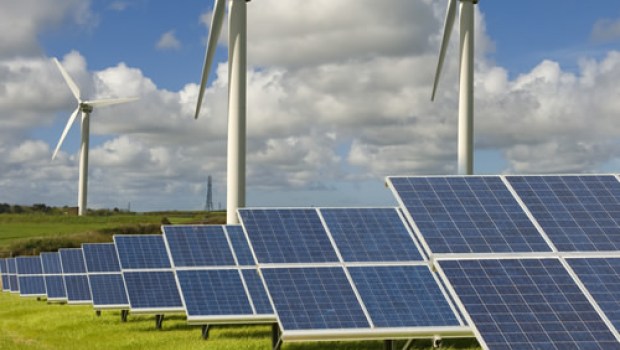Flexible Grid The Key To A Clean Energy Future
Wednesday, Aug 21 2013

I’m looking forward to speaking at Senator Reid’s National Clean Energy Summit next week in Las Vegas. I’ll be on the “21st Century Energy Market” panel where we’ll address what can be done to make the grid friendlier to renewables while ensuring long-term access to affordable and reliable electricity.
This is an important conversation to have right now. Huge progress on costs has made renewables like wind and solar affordable and competitive. As a result, wind and solar are now two of the top three sources of new power generation planned by utilities. We’re entering the era of mainstream renewables where an increasing proportion of new power comes from clean sources.
With cost receding as the primary objection to renewables, our nation can “get clean” without breaking the bank. But that doesn’t mean we’re automatically going to get everything renewables have to offer. In order to get maximum impact—think 70% or more of our power coming from renewables—we need to begin making big changes to the way we operate the electric grid to make it more renewables-friendly.
The electric power grid (actually many regional grids) we have today is an amazing piece of engineering. It connects thousands of generators to millions of customers and delivers power so reliably we simply take it for granted. But it was built on a set of design assumptions that don’t fit today’s priorities. It assumed we’d have a big base of nuclear plants that ran steadily night and day, with hydro, gas- and coal-fired plants that could be ramped slowly up and down to meet demand for power.
By various estimates, today’s grid can probably accommodate 30%-40% renewable power with a few adjustments here and there. This is largely the approach we’ve taken so far to integrate renewables in the U.S. But getting to a 70%+ renewable scenario requires us to incorporate a different design assumption—that most of our power in the future will come from variable generators that create electricity when the sun shines and the wind blows.
Experts tell us that building a more renewables-friendly system requires us to evolve to a “flexible grid” designed around exactly that variability. A flexible grid can move power fluidly across regions from where it is generated to where it is used. It features large amounts of distributed generation and the ability to manage power demand by controlling large equipment that doesn’t have to run all the time. And it has quick-response resources like hydro and gas-fired generators (and storage) that can be ramped up and down quickly to cover short-term imbalances between supply and demand.
Broadly speaking, the changes needed to realize a “flexible grid” fall into four major areas:
- Regional Integration – we need more transmission lines and (just as important) we need agreements between regions to share resources and information about demand and available generation
- Demand-side Resources – we need to create markets or tariffs for distributed generation and demand-management that enables system operators to reduce, forecast, and control load
- Flexible Generation & Storage – we need to create markets for generation and storage that place value on the capability to ramp up and down quickly and maintain local power quality
- Forecasting & Scheduling – to make the most of all of the above, we need to give system operators access to current information about supply and demand plus the controls over transmission, generation, and load to make it all work together seamlessly
Moving forward on these efforts will be incremental and involve technical, market, and regulatory complexities. The form it takes will vary from region to region depending on resources and politics. And it will likely also force us to examine the role and business models of utilities; the current net-metering conflicts in the West demonstrate this challenge.
As always, it will also require us to sort out the costs and benefits and cost allocation. Some have already suggested imposing the cost of building flexible resources solely on renewable generators as an ‘integration cost,’ which creates a disincentive to building exactly the kind of resources we want to prioritize—these costs should instead be seen as part of the overhead of a flexible system that is necessary to achieve our overall system goals. While new investment in transmission and generation will certainly be required, most analysts also agree that there will be significant efficiencies from regional resource sharing that could create billions of dollars of annual savings.
In the West, this process of change is already underway. The California Independent System Operator (CAISO) recently announced an agreement with Pacificorp to create an energy imbalance market (EIM). The EIM is an important step forward in regional integration that will connect California’s grid to large areas of the Northwest. The two regions will exchange information on generation on 5-minute intervals and enable automated sharing of resources. The EIM’s success will hinge on our ability to remove barriers to new transmission. It will also require close harmonization with state RPS goals to ensure that sharing resources doesn’t create unintended consequences.
Bottom line: Change is required to evolve the kind of renewables-friendly “flexible grid” that will put us on path to a clean energy future. This kind of change won’t be easy and it will happen incrementally. But the effort and investment this evolution requires will be well worth it. The reward will be a cleaner, more reliable and affordable electrical system that can meet the needs of future generations for decades and centuries to come.
Arno Harris, Recurrent Energy CEO and SEIA Board Chair